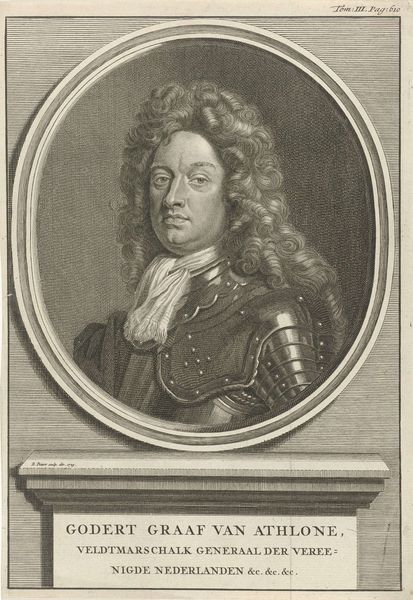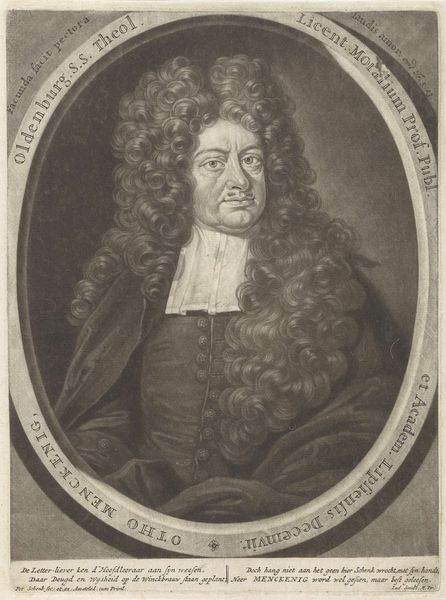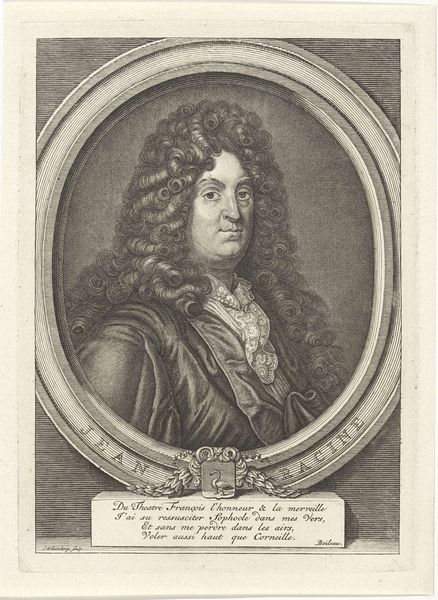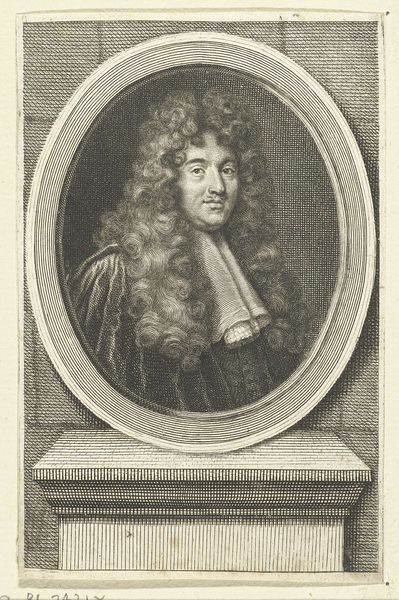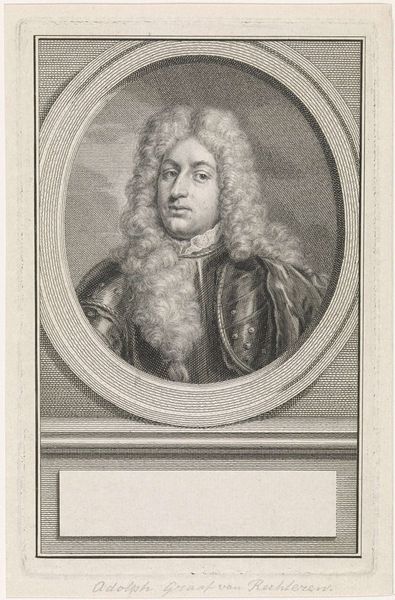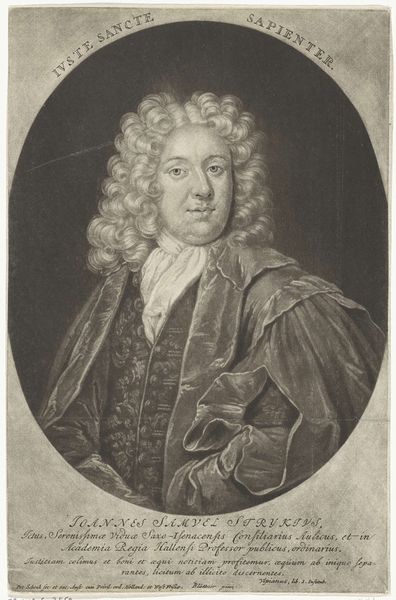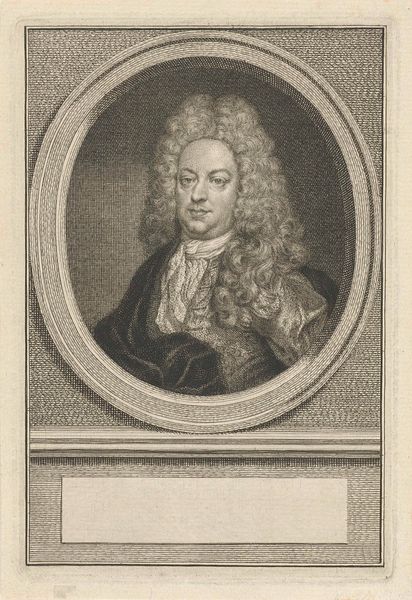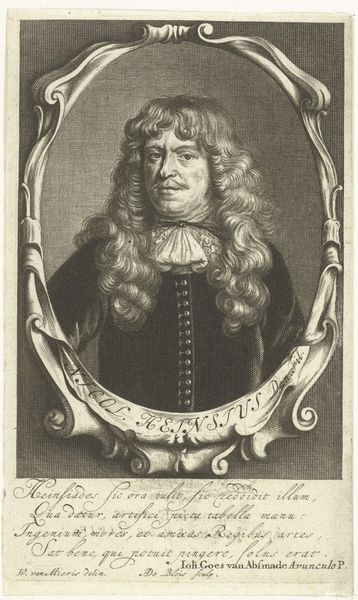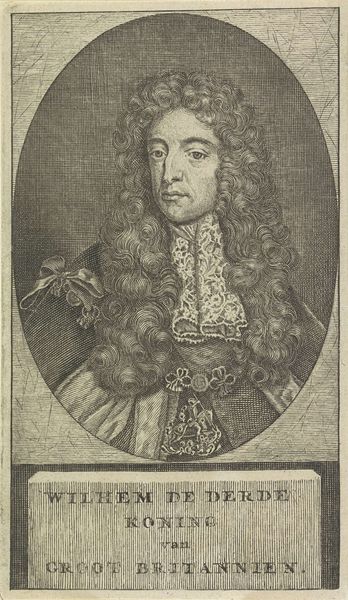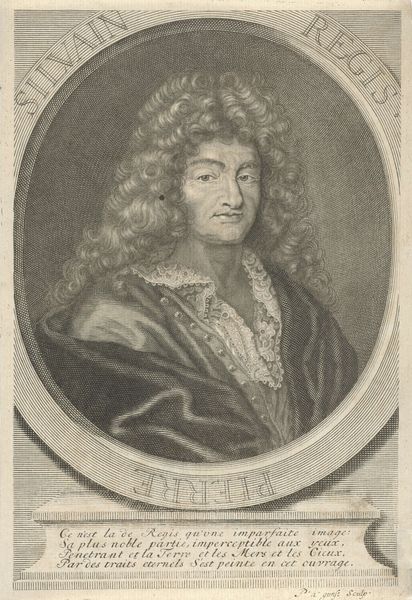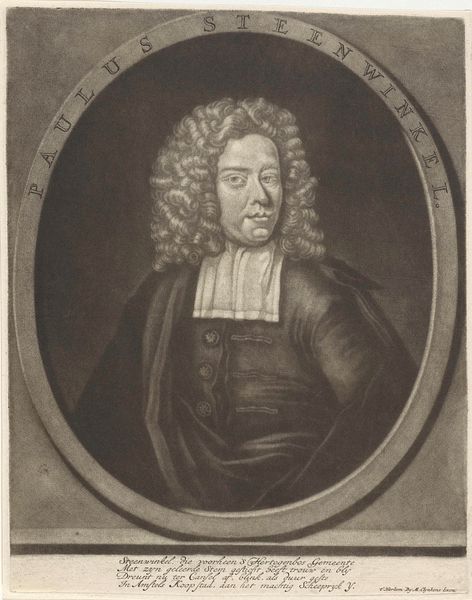
print, engraving
#
portrait
#
baroque
# print
#
engraving
Dimensions: height 164 mm, width 103 mm
Copyright: Rijks Museum: Open Domain
Editor: This is Adriaen Haelwegh's "Portrait of Richard Morton," an engraving dating from the late 17th century. The detail is impressive for a print, especially the way he’s captured the elaborate wig and lace collar. What draws me in most is the somewhat serious expression. How do you interpret this work? Curator: Well, portraits are more than just likenesses, aren't they? They’re carefully constructed presentations of self, intended to convey status and character. Look at the wig, the lace. These are potent symbols of wealth and authority. It's not merely fashion, it's a statement. Richard Morton was clearly someone of importance, as signified by his title beneath the image. Think about how the intended audience, likely other medical professionals, might have received this image. Editor: So, it’s almost like a visual resume, then? Showing not just who he was, but also signaling his affiliations and accomplishments. Curator: Precisely! And notice the oval frame. Ovals are frequently employed as framing devices in portraiture. The engraver skillfully used the oval to draw your eyes to his face. Does that suggest any cultural references to you? Think of ancient traditions in Rome and Greece. Editor: Now that you mention it, it does remind me of the tradition of portrait busts from ancient times. Kind of like putting him on a pedestal. Curator: Exactly! By consciously employing familiar forms and universally recognizable signs, Haelwegh elevates Morton's status, while at the same time reinforcing established power structures within the medical community. The portrait is a symbolic gesture intended to position Richard Morton within an established lineage. Editor: That's a fascinating perspective. I hadn't considered how much cultural weight these details carry. Curator: Indeed. Every line, every choice speaks volumes. It invites us to look beyond the surface, into the underlying language of images. Editor: I’ll definitely look at portraits differently now!
Comments
No comments
Be the first to comment and join the conversation on the ultimate creative platform.
